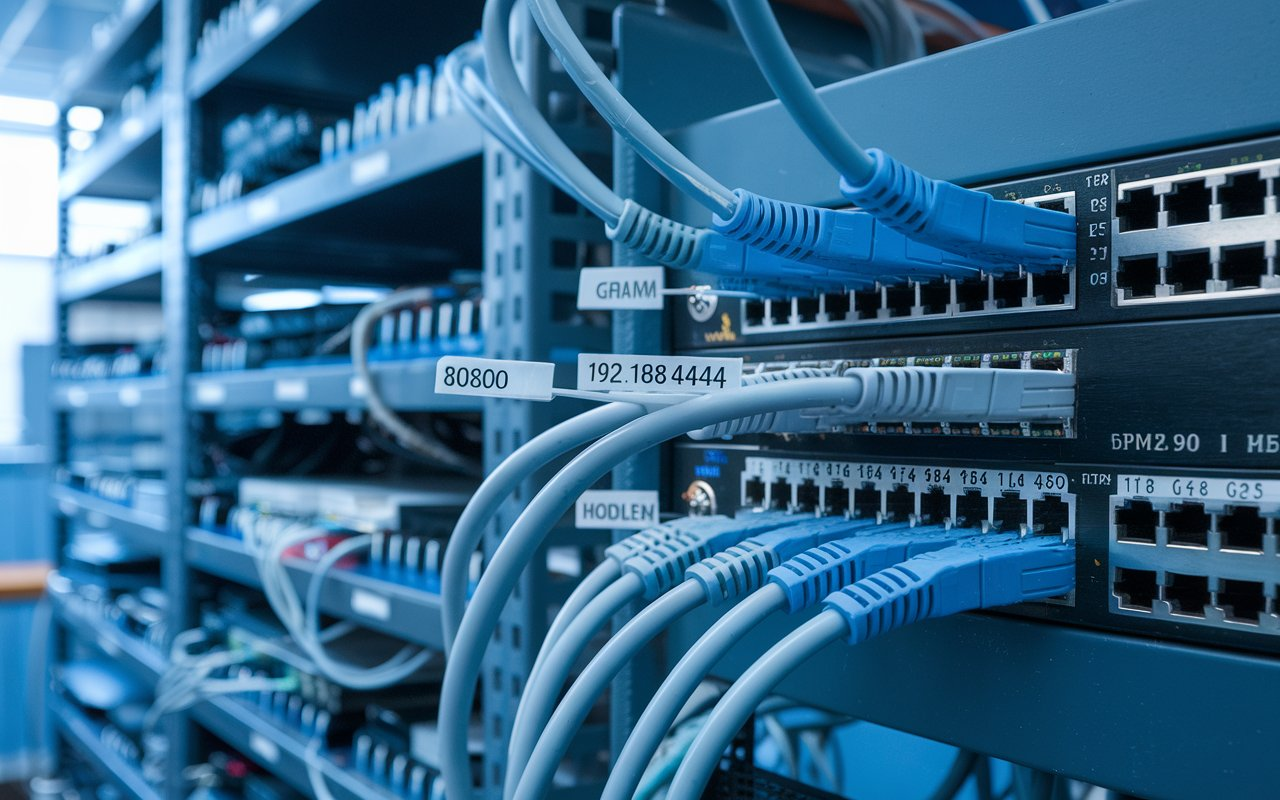Introduction
The address 192.168.44.44.8080 represents a unique combination of an IP address and a port number commonly found in local network configurations. As a private IP address, 192.168.44.44 is typically used within internal networks, allowing devices to communicate without direct internet access. Adding 8080 as the port number indicates a channel through which web services can operate, often used for alternative HTTP traffic. This setup is handy for testing web applications or services in development environments, enabling easy access to resources without interference from external network traffic. Understanding the significance 192.168.44.44.8080 is crucial for network administrators and developers working to maintain efficient local networking and service management.
Understanding 192.168.44.44.8080
The address 192.168.44.44.8080 refers to a specific combination of an IP address and a port number within a local network. The IP part, 192.168.44.44, belongs to a private range designated for internal network use, which means it is not accessible from the public internet. This makes it ideal for home or office networks, where devices must communicate securely without exposure to outside threats. Port 8080 is often associated with web services, allowing users to access applications or interfaces hosted on that IP address. Understanding this structure is essential for network management and configuration.
The Role of IP Addresses
In 192.168.44.44.8080, the IP address is crucial in identifying devices on a local network. IP addresses function like mailing addresses, enabling devices to send and receive information effectively. Every device on a network requires a unique IP address to communicate without conflict. Using private IP addresses, such as 192.168.44.44, helps maintain organization within the network and provides a layer of security. This private addressing scheme prevents unauthorized access from outside users.
Port Numbers Explained
Port numbers, including 8080, are vital for determining a device’s specific service on a network. While IP addresses identify the device, port numbers indicate the application or service running on that device. For example, port 8080 is often used as an alternative to port 80, the default for standard web traffic. This flexibility allows multiple web applications to operate on the same IP address without conflict. Understanding the function of port numbers is essential for efficient network design.
Use Cases for 192.168.44.44.8080
The address 192.168.44.44.8080 can serve various purposes within a local network. Developers often use this setup to test web applications or services during development. This address allows developers to interact with their applications without deploying them to a live server. Additionally, network administrators can utilize this configuration to manage internal web services, such as dashboards or control panels. This versatility makes 192.168.44.44.8080 a valuable tool in both development and administration.
Security Considerations
While 192.168.44.44.8080 provides advantages for local networking, security considerations are essential. Even though private IP addresses are less vulnerable to outside attacks, internal networks can still be at risk. Network administrators should implement firewalls and security measures to protect devices communicating through this address. Additionally, monitoring traffic on port 8080 can help detect any unauthorized access attempts. Awareness of these security aspects ensures the integrity of local network communications.
Accessing Web Applications
To access web applications via 192.168.44.44.8080, users must enter the address into a web browser. This directs the browser to the specified IP address and port, allowing interaction with the hosted service. Users will see its interface load on their screen if a web application is configured correctly. This straightforward process makes it easy for users to access internal tools and resources. Familiarity with this method enhances efficiency in navigating local network applications.
Configuring Local Servers
Setting up a local server to respond to 192.168.44.44.8080 is a common task for developers and network administrators. By configuring a server to listen on this IP address and port, users can host web applications that others within the network can access. This setup benefits collaborative projects, where multiple users can test and refine applications in real-time. Proper configuration ensures smooth operation and user access to critical resources. Understanding how to set up local servers is vital for successful project development.
Troubleshooting Connections
When issues arise with 192.168.44.44.8080, troubleshooting steps can help identify and resolve problems. Users should verify that the server is running and configured correctly to listen on the designated port. Checking network connections and firewall settings can also reveal potential obstacles. Additionally, users can utilize network diagnostic tools to trace connectivity issues. Effective troubleshooting techniques ensure reliable access to local services through this address.
Future Applications
As technology evolves, 192.168.44.44.8080 may expand to accommodate new applications and services. The increasing reliance on local networks for various tasks, such as IoT devices and smart home systems, underscores the importance of understanding such configurations. Future developments may see enhanced security features and more efficient local network management methods. Keeping abreast of these advancements ensures that users can fully leverage the potential of 192.168.44.44.8080.
Conclusion
192.168.44.44.8080 is a critical component of local networking. Users can effectively manage and access various network applications by understanding the implications of private IP addresses and port numbers. Security considerations, troubleshooting techniques, and future trends highlight the importance of this address. Embracing these concepts empowers network users and administrators to optimize their local networking environments.

